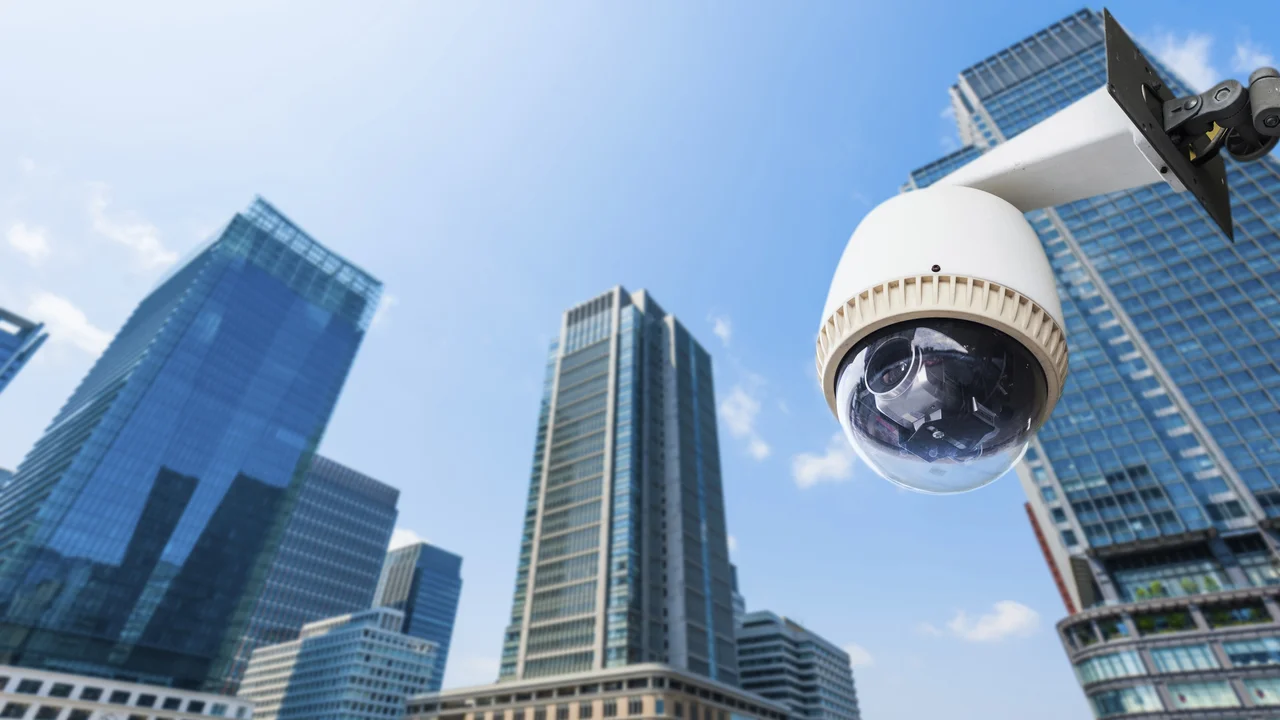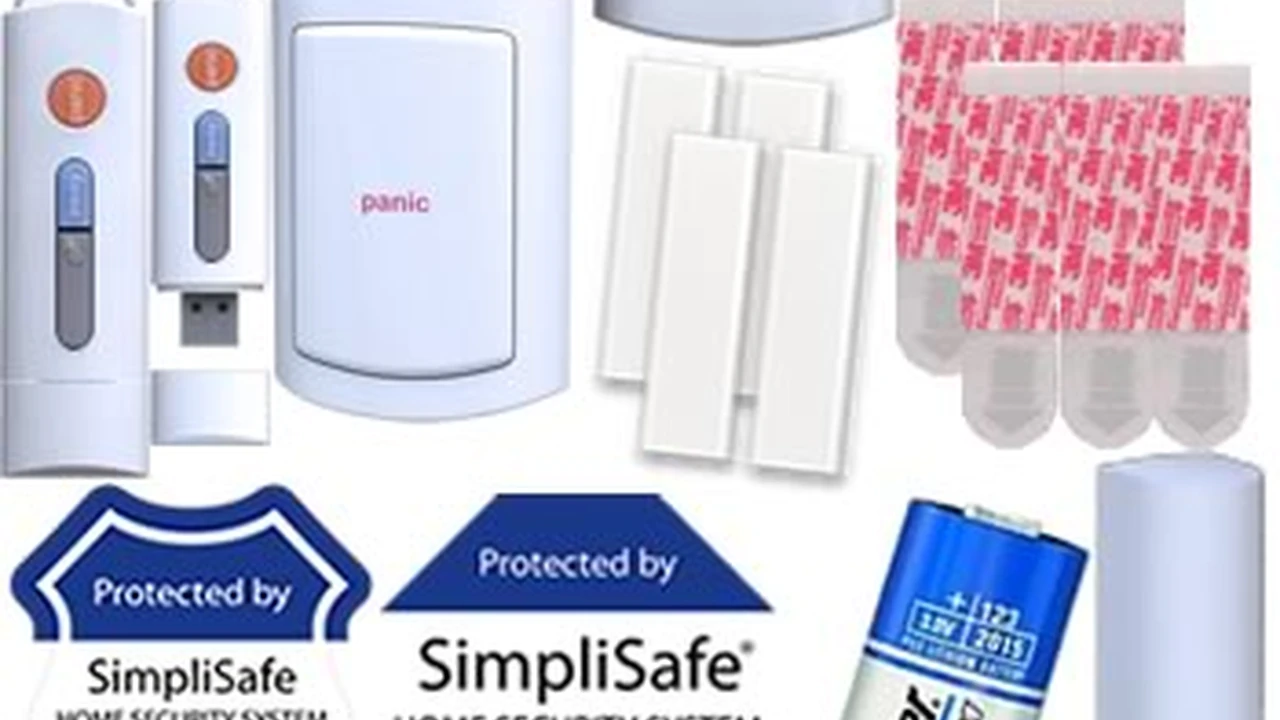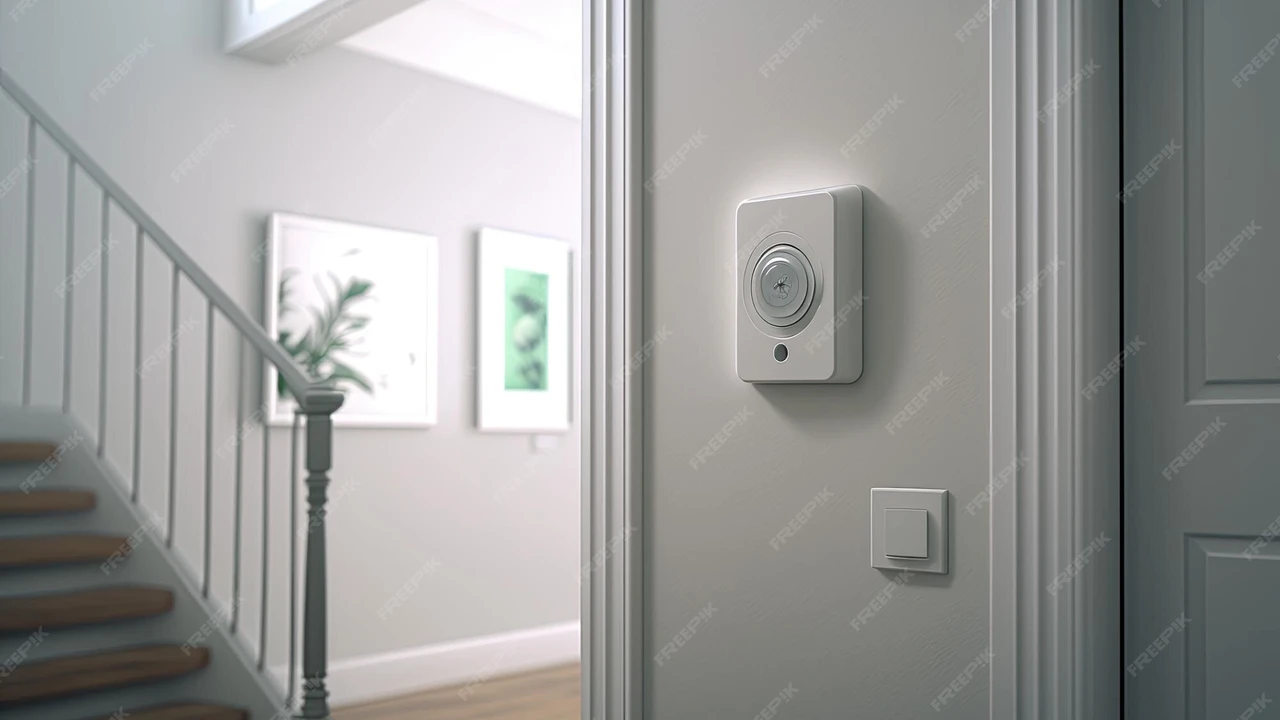CCTV Systems for Schools and Educational Institutions
Discover reliable CCTV systems designed to enhance safety and security in school environments.

Discover reliable CCTV systems designed to enhance safety and security in school environments.
CCTV Systems for Schools and Educational Institutions
Ensuring the safety and security of students, faculty, and staff within educational institutions is paramount. In today's world, where security concerns are unfortunately on the rise, implementing robust surveillance solutions is no longer a luxury but a necessity. CCTV (Closed-Circuit Television) systems play a crucial role in creating a secure learning environment, deterring potential threats, and providing valuable evidence when incidents occur. This comprehensive guide will delve into the specifics of CCTV systems tailored for schools and educational institutions, covering everything from essential features to product recommendations and deployment strategies.
Why Educational Institutions Need Advanced CCTV Surveillance
The reasons for deploying advanced CCTV surveillance in schools are multifaceted. Firstly, they act as a powerful deterrent against vandalism, theft, and unauthorized access. Visible cameras can significantly reduce the likelihood of these incidents. Secondly, in the unfortunate event of an incident, CCTV footage provides critical evidence for investigations, helping law enforcement identify perpetrators and understand the sequence of events. This is invaluable for resolving disputes, addressing bullying, and responding to more serious threats. Thirdly, modern CCTV systems offer real-time monitoring capabilities, allowing security personnel or designated staff to respond quickly to unfolding situations, from medical emergencies to potential security breaches. Finally, they contribute to a general sense of safety and well-being among the school community, reassuring parents that their children are in a secure environment.
Key Features to Look for in School CCTV Systems
When selecting a CCTV system for an educational institution, several key features should be prioritized to ensure maximum effectiveness and compliance with relevant regulations. These features go beyond basic recording and offer enhanced capabilities for a truly secure environment.
High-Resolution Cameras for Clear Imaging and Identification
Clarity is king when it comes to surveillance footage. High-resolution cameras, typically 4K or 1080p, are essential for capturing clear images that allow for accurate identification of individuals and objects. This is particularly important in areas with high foot traffic or where detailed observation is required, such as entrances, hallways, and common areas. Look for cameras with good low-light performance and Wide Dynamic Range (WDR) to handle varying lighting conditions throughout the day.
Robust Night Vision Capabilities for 24/7 Monitoring
Security threats don't adhere to school hours. A reliable CCTV system must offer robust night vision capabilities to ensure continuous monitoring, even in complete darkness. Infrared (IR) illuminators are standard, but consider cameras with advanced Starlight or Color Night Vision technology for clearer, more detailed images at night. This is crucial for securing school perimeters, parking lots, and isolated areas after hours.
Advanced Motion Detection and Smart Analytics for Proactive Security
Basic motion detection can be prone to false alarms. Modern CCTV systems for schools should incorporate advanced motion detection with customizable zones and sensitivity settings. Even better are systems with smart analytics, such as:
* Intrusion Detection: Alerts when someone crosses a predefined virtual line or enters a restricted area.
* Loitering Detection: Identifies individuals lingering in sensitive areas for an unusual amount of time.
* Object Left/Removed Detection: Notifies if an object is left behind or removed from a specific area.
* Facial Recognition (with privacy considerations): Can be used for access control or identifying known individuals, but must be implemented with strict adherence to privacy policies and local regulations.
These features enable proactive security measures, allowing staff to be alerted to potential issues before they escalate.
Remote Monitoring and Mobile Access for Flexible Management
School administrators and security personnel need the flexibility to monitor the premises from anywhere, at any time. Remote monitoring capabilities, accessible via secure web portals or mobile applications, are indispensable. This allows for quick checks on school activity, immediate response to alerts, and even remote access for law enforcement during emergencies. Ensure the system offers secure, encrypted access to prevent unauthorized viewing.
Scalability and Integration with Existing Security Systems
Educational institutions often grow and evolve, and their security systems should be able to adapt. Choose a CCTV system that is scalable, allowing for the easy addition of more cameras or storage as needed. Furthermore, seamless integration with other security systems, such as access control, alarm systems, and intercoms, creates a unified security platform. This centralized management enhances efficiency and provides a holistic view of the school's security posture.
Data Storage and Retention Policies for Compliance and Evidence
The amount of footage generated by a school CCTV system can be substantial. Adequate storage capacity, whether on-site NVRs (Network Video Recorders) or cloud-based solutions, is crucial. Consider storage options that offer sufficient retention periods to comply with school policies and legal requirements for evidence. Hybrid solutions, combining local storage for immediate access and cloud storage for redundancy and off-site backup, are often ideal.
Privacy Features and Compliance with Regulations
While security is paramount, student and staff privacy must also be respected. Look for CCTV systems that offer privacy masking features, allowing certain areas within the camera's view to be obscured. It's also vital to be aware of and comply with local, state, and federal regulations regarding surveillance in schools, including notification requirements and data handling protocols. Transparency with the school community about the use of CCTV is also recommended.
Recommended CCTV Products for Educational Environments
Here are some highly-regarded CCTV systems and camera types suitable for various areas within a school or educational institution, along with their typical use cases and approximate pricing.
Dahua Technology: Comprehensive and Feature-Rich Solutions
Dahua is a global leader in video surveillance, offering a wide range of products suitable for educational settings. Their systems are known for their advanced analytics, high-resolution imaging, and robust build quality.
Dahua NVR5216-16P-4KS2E Network Video Recorder
- Use Case: Centralized recording and management for medium to large schools.
- Features: Supports up to 16 IP cameras, 4K resolution recording, PoE (Power over Ethernet) ports for easy camera connection, intelligent video analytics (IVS) support, and robust storage options.
- Comparison: Offers a good balance of performance and cost-effectiveness compared to some enterprise-level solutions. User-friendly interface.
- Approximate Price: $400 - $700 (NVR unit only, cameras extra).
Dahua IPC-HFW2831T-ZS-S2 8MP IR Vari-focal Bullet Camera
- Use Case: Outdoor perimeter surveillance, parking lots, building exteriors.
- Features: 8MP (4K) resolution, vari-focal lens (2.7mm-13.5mm) for adjustable field of view, 60m IR night vision, IP67 weather resistance, IK10 vandal resistance, and intelligent detection features.
- Comparison: Excellent image quality and durability for outdoor use. The vari-focal lens provides flexibility during installation.
- Approximate Price: $180 - $250 per camera.
Dahua IPC-HDW2531TM-AS-S2 5MP IR Fixed-focal Eyeball Camera
- Use Case: Indoor hallways, classrooms (with privacy considerations), common areas, libraries.
- Features: 5MP resolution, fixed-focal lens (2.8mm or 3.6mm), 30m IR night vision, built-in microphone, and intelligent detection.
- Comparison: Discreet design, good for indoor aesthetics. The built-in microphone can be useful for incident review (check local regulations on audio recording).
- Approximate Price: $100 - $150 per camera.
Hikvision: Industry Standard with Advanced AI Capabilities
Hikvision is another industry giant, known for its cutting-edge technology, including advanced AI features and a vast product portfolio.
Hikvision DS-7616NI-I2/16P 16-Channel 4K NVR
- Use Case: Centralized recording and management for medium to large schools, especially those looking for advanced AI integration.
- Features: Supports up to 16 IP cameras, 4K resolution recording, 16 PoE ports, H.265+ compression for efficient storage, and compatibility with Hikvision's AcuSense and ColorVu cameras.
- Comparison: Similar to Dahua's NVRs but often integrates more seamlessly with Hikvision's proprietary AI cameras for enhanced analytics.
- Approximate Price: $500 - $800 (NVR unit only, cameras extra).
Hikvision DS-2CD2T87G2-L 8MP ColorVu Bullet Camera
- Use Case: Outdoor areas requiring full-color imaging at night, entrances, critical pathways.
- Features: 8MP (4K) resolution, ColorVu technology for 24/7 full-color imaging (no IR needed), built-in warm supplemental light, IP67 weather resistance, and AcuSense technology for accurate human/vehicle detection.
- Comparison: ColorVu is a significant advantage for night surveillance, providing much more detail than traditional IR. AcuSense reduces false alarms.
- Approximate Price: $250 - $350 per camera.
Hikvision DS-2CD2143G2-I(S) 4MP AcuSense Dome Camera
- Use Case: Indoor common areas, hallways, administrative offices, entrances.
- Features: 4MP resolution, fixed-focal lens, 30m IR night vision, AcuSense technology for human/vehicle classification, IK10 vandal resistance, and optional audio (S model).
- Comparison: Excellent for indoor areas where vandal resistance is important. AcuSense helps filter out irrelevant motion events.
- Approximate Price: $150 - $220 per camera.
Axis Communications: Premium Quality and Reliability
Axis is renowned for its high-quality, reliable, and network-friendly IP cameras. While often at a higher price point, their products offer exceptional performance and longevity.
Axis M30 Series Network Cameras (e.g., M3065-V)
- Use Case: Indoor classrooms, small offices, discreet surveillance in common areas.
- Features: Compact and discreet design, HDTV 1080p or 4MP resolution, wide dynamic range, excellent low-light performance, and easy installation.
- Comparison: Known for superior image processing and reliability. Ideal for areas where a less intrusive camera is preferred.
- Approximate Price: $250 - $400 per camera.
Axis P32 Series Network Cameras (e.g., P3245-LV)
- Use Case: Main entrances, large hallways, auditoriums, outdoor sheltered areas.
- Features: HDTV 1080p or 4MP resolution, Lightfinder and Forensic WDR for excellent image quality in challenging light, OptimizedIR for night vision, IK10 vandal resistance, and remote zoom/focus.
- Comparison: A step up in performance and features from the M30 series, offering more robust capabilities for critical areas.
- Approximate Price: $500 - $800 per camera.
Ubiquiti UniFi Protect: User-Friendly and Cost-Effective for Smaller Schools
Ubiquiti offers a more integrated and user-friendly ecosystem, often favored by smaller institutions or those with existing UniFi networking infrastructure. It's known for its simplicity and lack of recurring fees.
UniFi Protect NVR (UNVR)
- Use Case: Centralized recording and management for small to medium schools, especially those already using UniFi networking.
- Features: Dedicated NVR appliance, supports up to 50 cameras, easy setup and management via UniFi Protect software, no monthly fees, and scalable storage.
- Comparison: Simpler to deploy and manage than traditional NVRs, especially for IT staff familiar with UniFi. More budget-friendly for smaller deployments.
- Approximate Price: $300 - $400 (NVR unit only, cameras extra).
UniFi Protect G4 Bullet Camera
- Use Case: Outdoor and indoor general surveillance, hallways, common areas.
- Features: 4MP resolution, 24 FPS, IR night vision, weather-resistant, and integrated microphone.
- Comparison: Good all-around camera for general surveillance. Integrates seamlessly with the UniFi Protect ecosystem.
- Approximate Price: $199 per camera.
UniFi Protect G4 Dome Camera
- Use Case: Indoor discreet surveillance, classrooms, offices.
- Features: 4MP resolution, 24 FPS, IR night vision, IK08 vandal resistance, and integrated microphone.
- Comparison: Similar performance to the G4 Bullet but in a more discreet dome form factor, suitable for indoor aesthetics.
- Approximate Price: $179 per camera.
Strategic Placement and Coverage Areas for School CCTV
Effective CCTV deployment in schools requires careful planning of camera placement to maximize coverage and address specific security vulnerabilities. A well-thought-out strategy ensures that critical areas are monitored without infringing unnecessarily on privacy.
Entrances and Exits for Access Control and Visitor Management
All main entrances and exits, including those for vehicles and pedestrians, should be covered. Cameras here are vital for monitoring who enters and leaves the premises, identifying visitors, and deterring unauthorized access. Consider cameras with facial recognition capabilities (if legally permissible and ethically sound) or license plate recognition for parking areas.
Hallways and Corridors for Monitoring Student Movement
Long hallways and corridors are prime locations for general surveillance, helping to monitor student movement, prevent bullying, and quickly identify the source of any disturbances. Cameras should be placed to cover the full length of corridors, minimizing blind spots.
Common Areas Cafeterias Gyms and Libraries
These are high-traffic areas where large groups of students congregate. Cameras in cafeterias, gyms, and libraries can help manage crowds, prevent theft, and respond to incidents quickly. Wide-angle or fisheye cameras might be suitable for comprehensive coverage in large open spaces.
Perimeter and Parking Lots for External Security
Securing the school perimeter is crucial to prevent unauthorized entry. Cameras should cover fences, gates, and all access points to the school grounds. Parking lots require surveillance to deter vehicle theft, vandalism, and ensure student safety during drop-off and pick-up times. Outdoor-rated, weather-resistant cameras with good night vision are essential here.
Sensitive Areas Computer Labs Administrative Offices
Areas containing valuable equipment or sensitive information, such as computer labs, administrative offices, and server rooms, require dedicated surveillance. These cameras can deter theft and provide evidence in case of a breach. Access control integration in these areas is also highly recommended.
Playgrounds and Outdoor Recreational Spaces
Monitoring playgrounds and outdoor recreational areas helps ensure student safety during recess and after-school activities. Cameras here can deter inappropriate behavior and provide oversight in areas that might not always be directly supervised by staff.
Installation and Maintenance Considerations for School CCTV
Beyond selecting the right equipment, proper installation and ongoing maintenance are critical for the long-term effectiveness of a school's CCTV system.
Professional Installation for Optimal Performance and Coverage
While some smaller systems can be DIY, for a comprehensive school-wide deployment, professional installation is highly recommended. Experienced installers can ensure optimal camera placement, proper wiring, network configuration, and system integration, minimizing blind spots and maximizing performance. They can also advise on compliance with building codes and safety standards.
Network Infrastructure Requirements Bandwidth and Storage
IP-based CCTV systems rely heavily on a robust network infrastructure. Ensure the school's network has sufficient bandwidth to handle the video streams from multiple high-resolution cameras without causing latency or network congestion. Adequate storage, whether local NVRs or cloud-based, must also be planned for, considering the number of cameras, resolution, frame rate, and desired retention period.
Regular Maintenance and Software Updates for System Longevity
CCTV systems require regular maintenance to ensure they function optimally. This includes cleaning camera lenses, checking cable connections, verifying recording functionality, and ensuring all cameras are online. Software and firmware updates are also crucial for patching security vulnerabilities, improving performance, and adding new features. Establish a routine maintenance schedule.
Training for Staff on System Operation and Incident Response
Even the most advanced CCTV system is only as effective as the people operating it. Comprehensive training for designated staff members (e.g., security personnel, administrators) on how to operate the system, review footage, respond to alerts, and handle incidents is essential. This includes understanding privacy protocols and legal guidelines.
Budgeting for a School CCTV System
The cost of a CCTV system for a school can vary significantly based on the size of the institution, the number of cameras, the complexity of the system, and the chosen features. Here's a general breakdown of cost considerations:
Initial Equipment Costs Cameras NVRs Software
This includes the cost of all cameras, the Network Video Recorder (NVR) or server, necessary software licenses, and any additional hardware like switches or monitors. For a small school with 10-20 cameras, this could range from $3,000 to $10,000. For larger institutions with 50+ cameras and advanced analytics, this could easily exceed $20,000 to $50,000 or more.
Installation Costs Professional Labor and Cabling
Professional installation can be a significant portion of the initial budget. This includes labor, cabling, conduit, and mounting hardware. Expect installation costs to be anywhere from 30% to 70% of the equipment cost, depending on the complexity of the installation and the existing infrastructure.
Ongoing Maintenance and Support Fees
Factor in annual maintenance contracts, software update subscriptions, and potential cloud storage fees. These recurring costs ensure the system remains operational and up-to-date. Budget a few hundred to a few thousand dollars annually for these services, depending on the system's size and complexity.
Potential for Future Expansion and Upgrades
Always consider future needs. Choose a system that allows for easy expansion, so you don't have to replace the entire infrastructure if you need to add more cameras or features down the line. This foresight can save significant costs in the long run.
Legal and Ethical Considerations for School Surveillance
Implementing CCTV in schools comes with important legal and ethical responsibilities that must be carefully addressed.
Privacy Laws and Student Rights
Understand and comply with all relevant privacy laws, such as FERPA (Family Educational Rights and Privacy Act) in the US, which protects student education records. Be transparent with parents and students about the use of surveillance and how footage will be stored and accessed. Avoid placing cameras in areas where there is a reasonable expectation of privacy, such as restrooms or changing rooms.
Data Retention and Access Policies
Establish clear policies for how long footage will be retained, who has access to it, and under what circumstances it can be reviewed or shared. Restrict access to authorized personnel only and ensure secure storage to prevent unauthorized breaches.
Transparency and Communication with the School Community
Openly communicate with parents, students, and staff about the purpose of the CCTV system, its benefits for safety, and the policies governing its use. This fosters trust and helps address any concerns about privacy or surveillance.
The Future of School Security Integrated Solutions
The trend in school security is moving towards fully integrated solutions that combine CCTV with other technologies for a holistic approach.
Integration with Access Control Systems
Linking CCTV with access control allows for visual verification of individuals entering the school, enhancing security at entry points. If an unauthorized entry occurs, the CCTV system can immediately record and alert staff.
Integration with Alarm Systems and Emergency Response
When an alarm is triggered, the CCTV system can automatically focus on the area of concern, providing real-time visual information to security personnel and first responders. This speeds up response times and provides critical context.
AI-Powered Analytics for Proactive Threat Detection
The future will see even more sophisticated AI analytics, capable of detecting unusual behavior patterns, identifying potential threats (e.g., weapons detection), and providing predictive insights to prevent incidents before they happen. These systems will become increasingly adept at distinguishing between normal school activity and genuine security risks.
By carefully considering these factors, educational institutions can implement CCTV systems that not only enhance safety and security but also create a more conducive and reassuring learning environment for everyone.
:max_bytes(150000):strip_icc()/277019-baked-pork-chops-with-cream-of-mushroom-soup-DDMFS-beauty-4x3-BG-7505-5762b731cf30447d9cbbbbbf387beafa.jpg)





